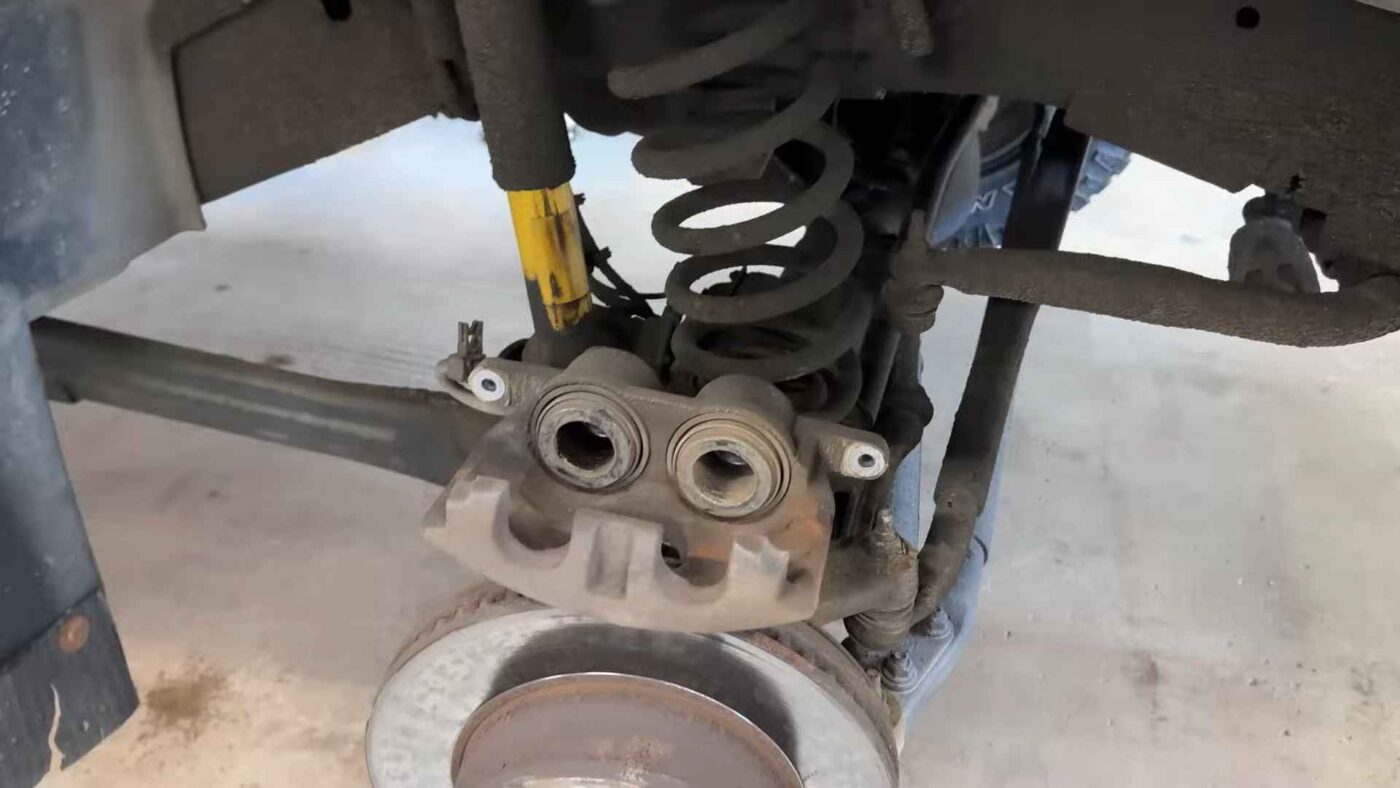 And I feel like a lot of people equate horsepower to towing ability, but you know, yes, this 57 Hemi is very powerful, but when we look at, you know, brakes, what’s going to stop that trailer? [Music] [Applause] Welcome, your faces back. I’m Alex and today we are talking about the top 10 differences between a half-tonon pickup truck and a 3/4tonon pickup truck. Some of which you guys may not have considered and ultimately with the hope of helping you guys buy the right truck for the right job. Now, yes, these are both Ram trucks, but generally for the most part, these differences that I’m going to talk about are pretty much across the board for all truck manufacturers like Ford and GM.
And I feel like a lot of people equate horsepower to towing ability, but you know, yes, this 57 Hemi is very powerful, but when we look at, you know, brakes, what’s going to stop that trailer? [Music] [Applause] Welcome, your faces back. I’m Alex and today we are talking about the top 10 differences between a half-tonon pickup truck and a 3/4tonon pickup truck. Some of which you guys may not have considered and ultimately with the hope of helping you guys buy the right truck for the right job. Now, yes, these are both Ram trucks, but generally for the most part, these differences that I’m going to talk about are pretty much across the board for all truck manufacturers like Ford and GM.
So, just keep that in mind. Starting at number one with some easy pickings, you guys guessed it. It is the powertrains or the engine options. And typically with a 2500, we see engine options that are more geared towards strength, durability, as well as more power. Whereas the modern 1500s have sort of morphed into these family haulers and gotten away from a work truck platform.
And the engine options have reflected that with manufacturers really making fuel economy and emissions top priority when building and engineering these engines and dare I say at times focusing on performance. So a lot of these engines in these 1500 trucks are pretty high strong. We’re seeing a lot of smaller displacement turbocharged engines which are fine but may not be the best in terms of durability, reliability or strength which is what we still see in the 2500 platform. Now yes a half ton can still be outfitted with a pretty powerful V8 engine like this 57 Hemi but across the way here we have a larger 6.4 4 liter Hemi, which is the base engine in these 2500s.
Now yes a half ton can still be outfitted with a pretty powerful V8 engine like this 57 Hemi but across the way here we have a larger 6.4 4 liter Hemi, which is the base engine in these 2500s.
And this Hemi engine is D-tuned. It’s engineered for low-end grunt. It’s engineered to have longer duty cycles. And that’s the key term here because there are a lot of half-tonon engines that are more powerful than this 6.4 Hemi.
The 5.3 L EcoBoost comes to mind. It could probably out tow this engine, but 2 3 4 years down the road, this 6.4 4 L Hemi is still going to be rocking down the highway where that 3.5 L EcoBoost being under load continuously, we’re probably going to start to see some issues with it.
So, these engines in these 2500s are much more focused on durability and strength, where in the 1500s were focused on fuel economy, performance, and emission reduction.
Lastly, when it comes to engines, these 2500s, they can be outfitted with the big bad diesels and can add a significant amount of power, oftent times over 1,000 lb feet of torque with modern diesel engines in these modern 2500s, which is a little bit crazy. At number two, and a big difference that tends to get overlooked, is brakes.
And everyone likes to think that big power means that you can tow big loads, but stopping that load is equally as important. So, we did rip into both of these these trucks here a little bit.
And well, so here we go. So, on the right, we have the brakes to our 1500 and on the left we have our front brakes to our 2500. And just by looks alone, you can see that our 2500 the equipment is just it’s bigger. And you know we can see our bracket is smaller here. Even our fasteners here.
Um you know there’s significant difference in strength and size. Coming to our brake pads here. From what I’ve read I think we’re about 12% bigger than the brake pads on our 1500. So you’re just going to get more stopping power. And that is incredibly important when you are pulling a trailer or you have a load in the back.
When looking at our 1500 rotor, you can see it’s it’s not as big. In fact, this rotor here is about an inch um bigger in terms of diameter.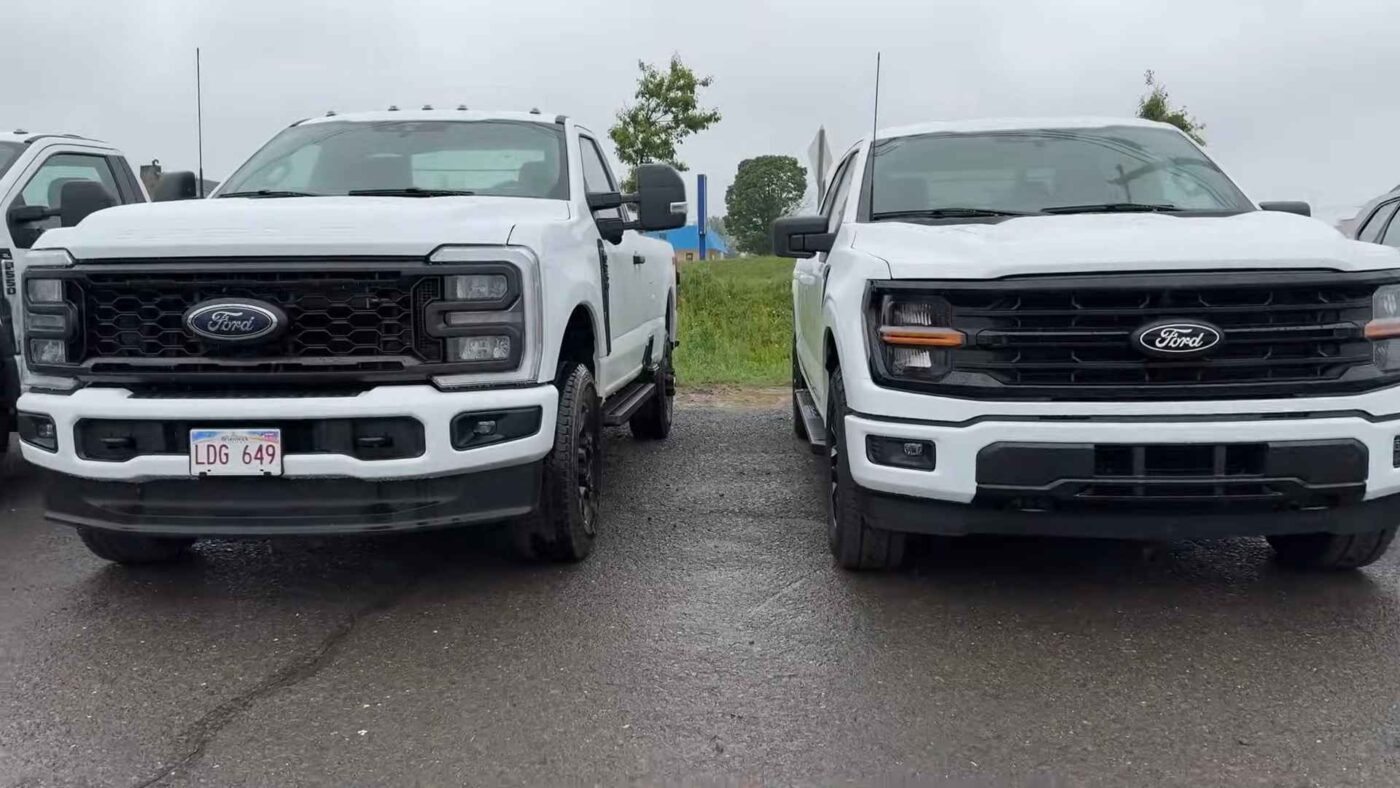 It’s also quite a bit thicker. And so there you go. You can sort of see hopefully anyways that it’s also quite a bit thicker.
It’s also quite a bit thicker. And so there you go. You can sort of see hopefully anyways that it’s also quite a bit thicker.
There’s a lot more venting. So, it’s going to be able to dissipate heat a heck of a lot more than the rotor on your 1500. Lastly is our actual calipers. You can see we’re about 9 in across there. Coming to our 1500, we are maybe about seven in a bit.
So almost 2 in smaller. And the pistons on this caliper are much larger. And it just adds to increased stopping power. And I feel like a lot of people equate horsepower to towing ability, but you know, yes, this 57 Hemi is very powerful, but when we look at, you know, brakes, what’s going to stop that trailer, a 2500 platform just has a lot more braking power, and I think it’s really important.
Another major difference that sometimes I feel gets swept under the rug when looking at things like towing figures is the frame and chassis of a 2500.
It’s substantially beefier than a 1500. And I know when I bought this truck going from a Ram 1500, the first time I towed with this truck, I couldn’t believe just how planted it felt going down the road. The trailer just wasn’t bobbing the chassis around as much as it was with my 1500. I mean, look at the frame up here on this 2500. It’s a it’s a fully boxed in frame as you guys can hopefully see.
Um, but it’s just it’s just so much beefier. And I mean, look at all that material right there. Getting under our 1500 here. Take a look at this frame. It’s still a pretty beefy unit. Looks pretty strong, but there’s certain areas, especially, you know, back here where this suspension components attached to it that just don’t have the same amount of beef to it, if you will. And even like this crossmember, just not the same strength level. At least it’s what it looks like on the surface. Check out the trailing arm on this 1500 first. And then we flip over the 2500.
Looks pretty strong, but there’s certain areas, especially, you know, back here where this suspension components attached to it that just don’t have the same amount of beef to it, if you will. And even like this crossmember, just not the same strength level. At least it’s what it looks like on the surface. Check out the trailing arm on this 1500 first. And then we flip over the 2500.
And you can just see it’s a lot bigger and it’s just going to add strength and rigidity to the chassis, the frame of the truck when the truck is under load. At number four, a very large difference between a 1500 and a 2500 is the upgraded heavyduty suspension that these trucks get with these Ram trucks.
Both the 2500s and the 1500s have coil suspension in the rear. And you can see our coils right here. here.
Now, they’re a little bit thicker in the 2500s, meaning we can put more weight in the bed. We can tow more weight in terms of tongue weight, and you’re just not going to sink or bury this bottom end as much. So, here you can see the coils on our 1500. They’re just a little bit smaller. They’re not going to have the same capacity as the coils on that 2500 sitting right over there.
So, without a doubt, a 1500 or a half ton truck comes with softer suspension, but like all things in life, there are pros and cons.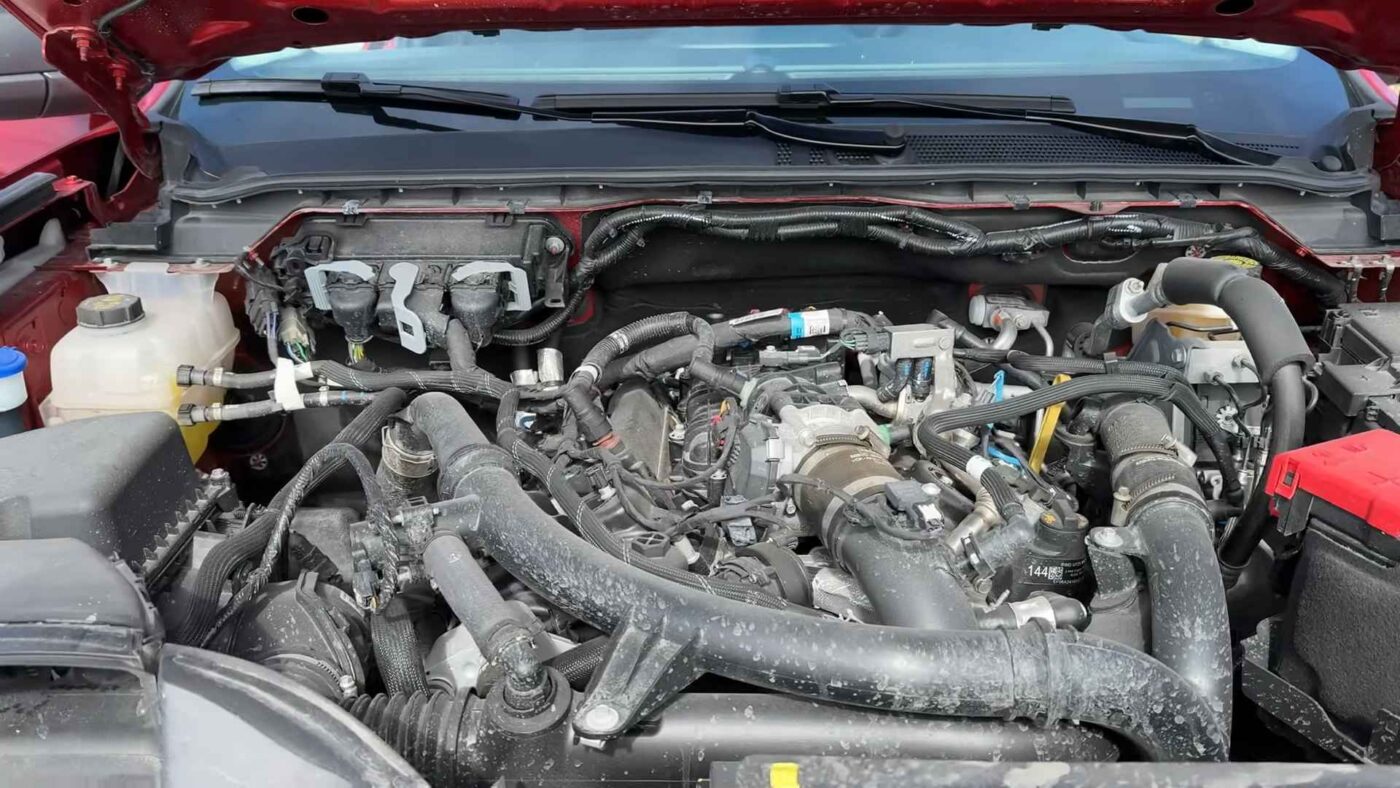 And if you don’t really need that stiffer upgraded suspension and you’re driving around unloaded most of the time, you’re going to have a rather rough ride and off-road, you’re going to probably shake your teeth loose. So having a 1500 if you want ride comfort is by far the better choice. Traditionally, we would normally see leaf packs and well, Ford and GM still use that. This is my F350 and you can see this heavy duty suspension setup.
And if you don’t really need that stiffer upgraded suspension and you’re driving around unloaded most of the time, you’re going to have a rather rough ride and off-road, you’re going to probably shake your teeth loose. So having a 1500 if you want ride comfort is by far the better choice. Traditionally, we would normally see leaf packs and well, Ford and GM still use that. This is my F350 and you can see this heavy duty suspension setup.
We have 1 2 3 4 5 six leaf springs in this leaf spring pack on the rear end here. So, that’s great for when we have load in the bed here. But when you’re driving down the road unloaded, it can make this ride extremely bumpy and sometimes uncomfortable.
At number five, axles and differentials. I wouldn’t say these are necessarily overlooked, but I am very excited to dive into the differences between this half ton and this 3/4 ton when it comes to those items.
Starting up front here with our half ton, we have a 8-in front differential Dana 44 style front axle and we have independent front suspension, meaning that we have CV axles, which are going to be driving our hubs and then driving our wheels. This front axle has a max weight rating of about 3,900 lb. And in case you didn’t know, these wheels will always be spinning your CV axles. Coming over to our 2500, this is where things really start to get interesting. We have a solid front axle here.
We have a larger 9.5 in ring gear. We got full floating axles. This axle has a weight rating of 5,500 lb, which is significantly more. We also have U-jints driving our hubs or our wheels here.
And for the most part, U-jints are much stronger and heavier duty than CV axles. And you’re much less likely to pop one of these babies when you are off-road in four-wheel drive, which is always nice. The largest advantage of a solid front axle, in my opinion, is strength. However, it does pretty significantly reduce ride quality, whereas something like an independent front suspension system that we see on a Ram 1500 is going to really help out frontend ride quality. Making our way to the rear differential and axles on this 2500, you can see we have a larger 11.
And you’re much less likely to pop one of these babies when you are off-road in four-wheel drive, which is always nice. The largest advantage of a solid front axle, in my opinion, is strength. However, it does pretty significantly reduce ride quality, whereas something like an independent front suspension system that we see on a Ram 1500 is going to really help out frontend ride quality. Making our way to the rear differential and axles on this 2500, you can see we have a larger 11.
5 in differential, a lot higher weight rating as well as larger axles. But I think the biggest difference back here for me is that we get full floating axles in the rear. whereas almost every 1500 I know of gets semifloating rear axles. And there’s a pretty large difference. Full floating axles essentially mean that the axles inside this rear axle housing take up no load of the vehicle whatsoever.
They only transfer torque from the drive line to the hubs or to the wheels. The axle housing and the hubs themselves take up all the load of the vehicle. So back here we have two axles. one axle going out to this wheel and we have one axle going out to that wheel over there.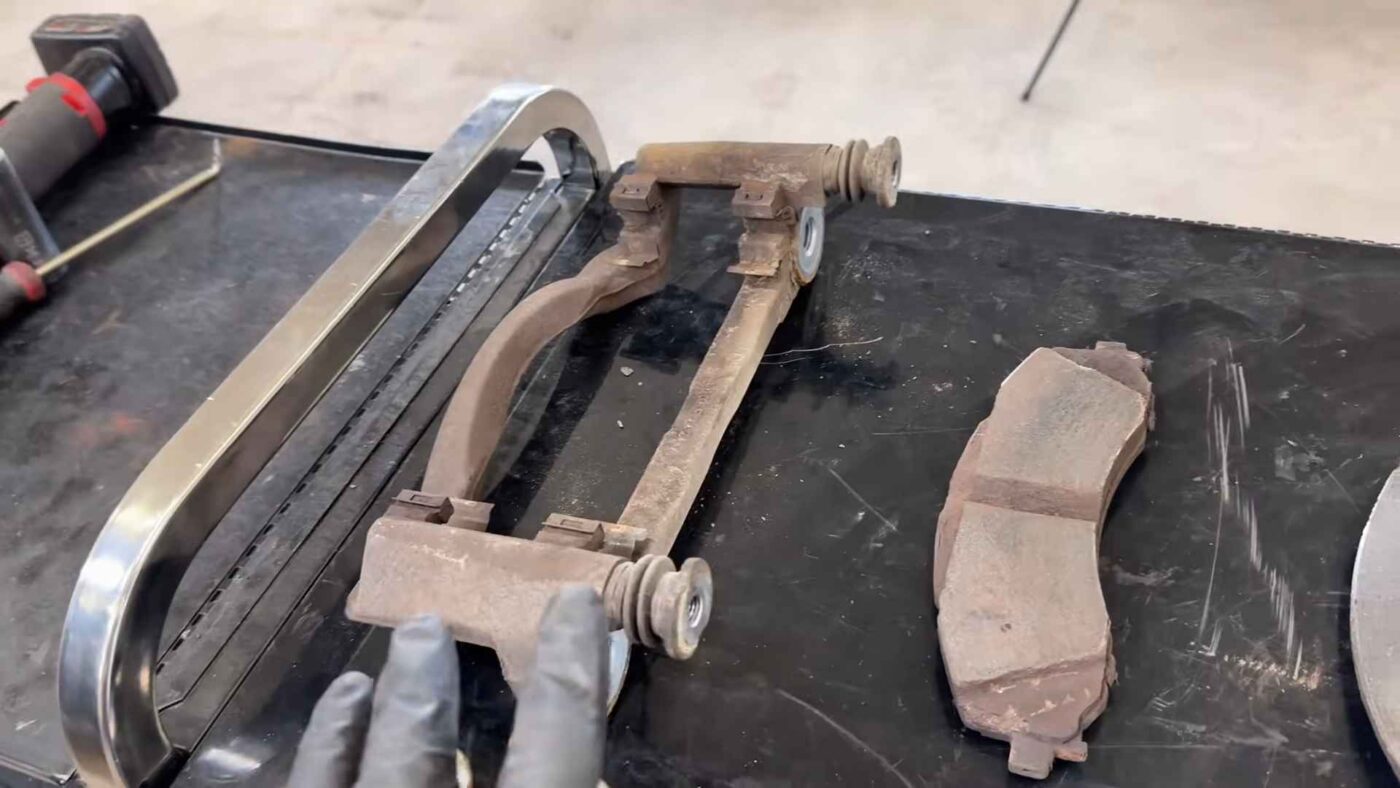 This right here is your axle housing.
This right here is your axle housing.
And inside this axle housing, we actually have a axle that is spinning and then spinning our wheels. This axle on this truck takes up all the load of the vehicle. So, the actual axle spinning the wheels takes up no load. All it has to do is transfer torque from this drive line right here to our wheels. And with this axle setup, doesn’t matter how much weight we load up in the truck.
The actual spinning axles inside this axle housing are not going to take up any of that load. Getting under our half ton here, we have a smaller 9.5 in rear differential with a weight capacity of only about 3900 lb, almost half as much as our 2500. And the big difference is we have semifloating axles.
And what that means is the axles that are spinning in this axle housing are taking up some of the load of the truck.
So as we put more weight in the box on the tongue or have a heavier trailer, that weight is going to be transferred to our actual axles that are spinning in these axle housings. And that is one of the main reasons why a 1500 in my opinion just is not that capable of towing heavier weights because you’re putting a lot of stress on the inner axle. That is not only transferring the torque from the drive line to your wheels, it is now also taking up some of the weight of that load. And that’s why we call them semi floating axles. And they’re just they’re not as strong as full floating axles which were on this rear differential on the 2500.
So, it’s not just the big powerful diesel engines that can give you those big tow ratings we see in a 2500. It’s the smaller things like full floating axles versus semi floating rear axles that give the 2500 trucks just that much more ability.
Next, at number six, something you may not have considered, something that I certainly didn’t consider when I went from a 1500 to this 2500, and that is weight, baby. This 1500 right now as it sits weighs about 5,200 lb. What do you think this 2500 truck weighs in at?
It weighs just over 7,000 lb. Almost a full ton heavier than this 1500. And we don’t even have a Cumins in here. You put a Cumins diesel engine in here. This 2500 is going to weigh about 2500 lb more than a 1500.
And it does make some sense. We got all this heavyduty suspension, bigger frame, bigger axles, differentials, and that weight does add up. But it was something that I completely disregarded. And to say that a 2500 weighs a full ton extra than a 1500 is pretty significant. All that extra weight is going to impact a number of things.
Tire wear, for example. Well, I got about 35,000 mi on this truck and these tires are looking a little thin these days. Fuel economy is a big one. Braking, handling, all these things are going to be affected. Another thing that I was not aware of is that depending on what province or state you live in, because this vehicle is so heavy in my province at least, it is considered a commercial vehicle, which means it costs me roughly double to license it every year than a 1500.
These are the little things that sometimes just get swept under the rug when comparing or looking at a 1500 to a 2500. At number seven, another little detail, but I think it’s important for anyone looking to tow it is your receiver hitch. So on all 2500s nowadays, you get a class 5 receiver hitch, which is a 2 and 1/2 in receiver. whereas whereas on a 1500 you get a class 4 receiver hitch which is only a 2-in receiver and there is some pretty significant differences in terms of these two receivers.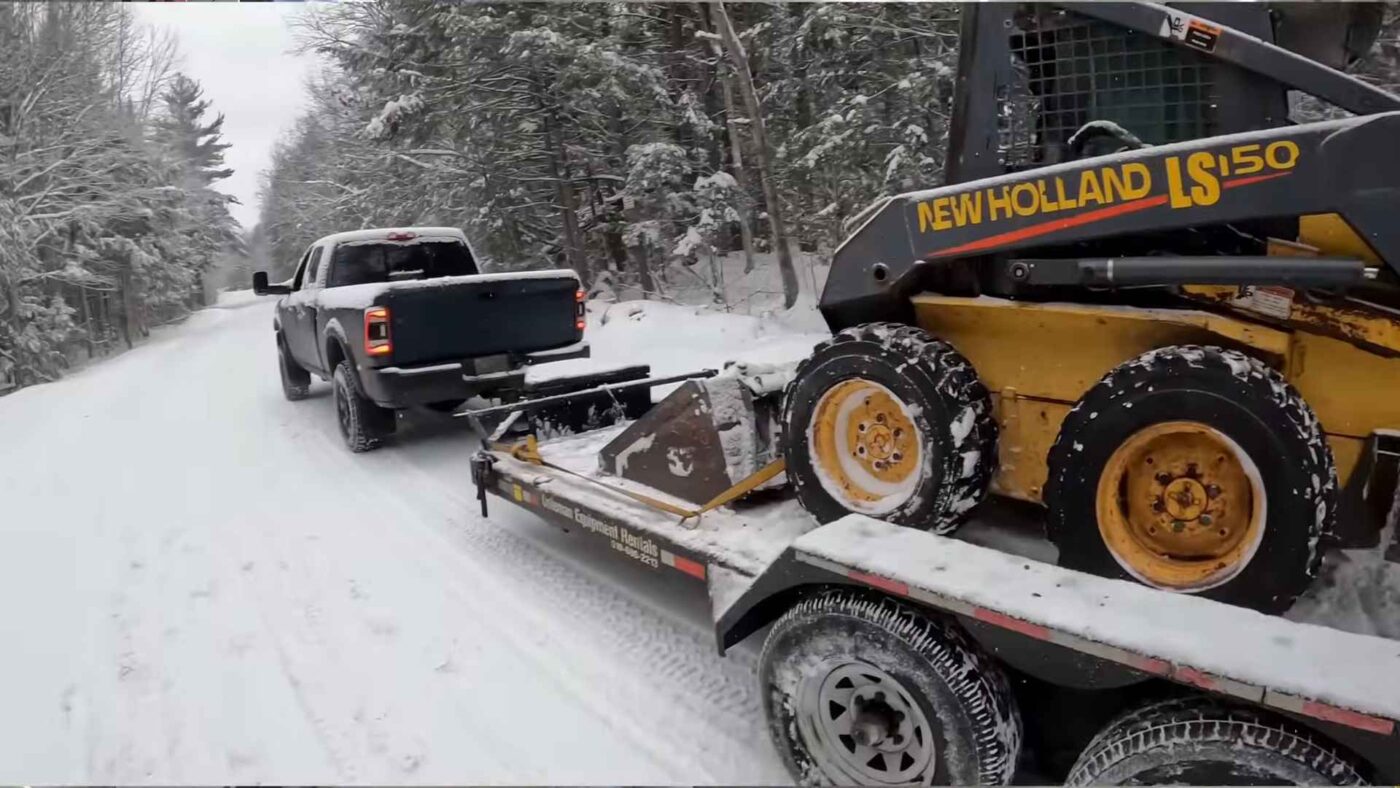 So first with a class 5 2 and 1/2 in receiver hitch you get a much larger weight rating.
So first with a class 5 2 and 1/2 in receiver hitch you get a much larger weight rating.
This hitch is rated for 1,800 lb of max tongue weight, whereas the class 4 on the newest Rams is limited to, I believe, 1,000 lb of tongue weight. But there’s a little bit of a caveat there. Anything over 500 lb on that class 4 receiver hitch, Ram highly recommends that you use a weight distributing hitch. So with a heavier duty class 5 receiver hitch, it just gives you a lot more flexibility in terms of weight rating. You don’t really need to worry whether or not you’re going to be maxing out your tongue weight.
And well, now that we’re talking about towing, at number eight, another lowhanging fruit here is well, with a 2500, you’re going to be able to tow better, tow more weight. We all know it.
Nothing surprising there. For me personally, the the magic number is that that 10,000 lb mark. I feel that if you’re towing more than 10,000 lb, you should probably heavily consider stepping up to a 2500.
Yes, there are some properly equipped 1500s that do have towing figures or max towing figures well above 10,000 lbs. And if you’re towing that much weight every now and again, I see no problem with that. But if you’re doing on a somewhat consistent basis, getting a 2500, for me, I just feel like you’re going to get more life out of the truck and it’s worth going up or spending a little bit of extra money to get that more heavyduty platform.
Let me know what you guys think about that, though. It’s not to say that a 1500 like this truck can’t tow a 10,000 11,000lb boat down the road.
I’m sure it’s going to do it just fine. But as we saw today with the lighter duty brakes, suspension, axles, differentials, as well as semifloating rear end, all of those components are certainly capable of towing that much weight, but they’re going to experience more wear and you’re just ultimately going to shorten the life of the truck if you’re towing that much weight. consistently. Right along with more towing is more payload or more specifically 2500s. They have a higher GBWR rating which gives them more payloads.
For example, a 2025 Ram 1500 crew cab 4×4 Big Horn has a payload around 1,800 lb.
A 2025 2500 crew cab 4×4 with a 64 Hemi has a payload just under 3,000 lb. So you get about a thousand more pounds of payload in a 2500 depending on configurations obviously. At number nine is gearing and more aggressive gearing like what this truck has for 10 gears allows for better torque generation as well as better pulling power. And you find that more 2500s have better or more aggressive gearing than what your 1500’s have.
Now it’s not necessarily a rule.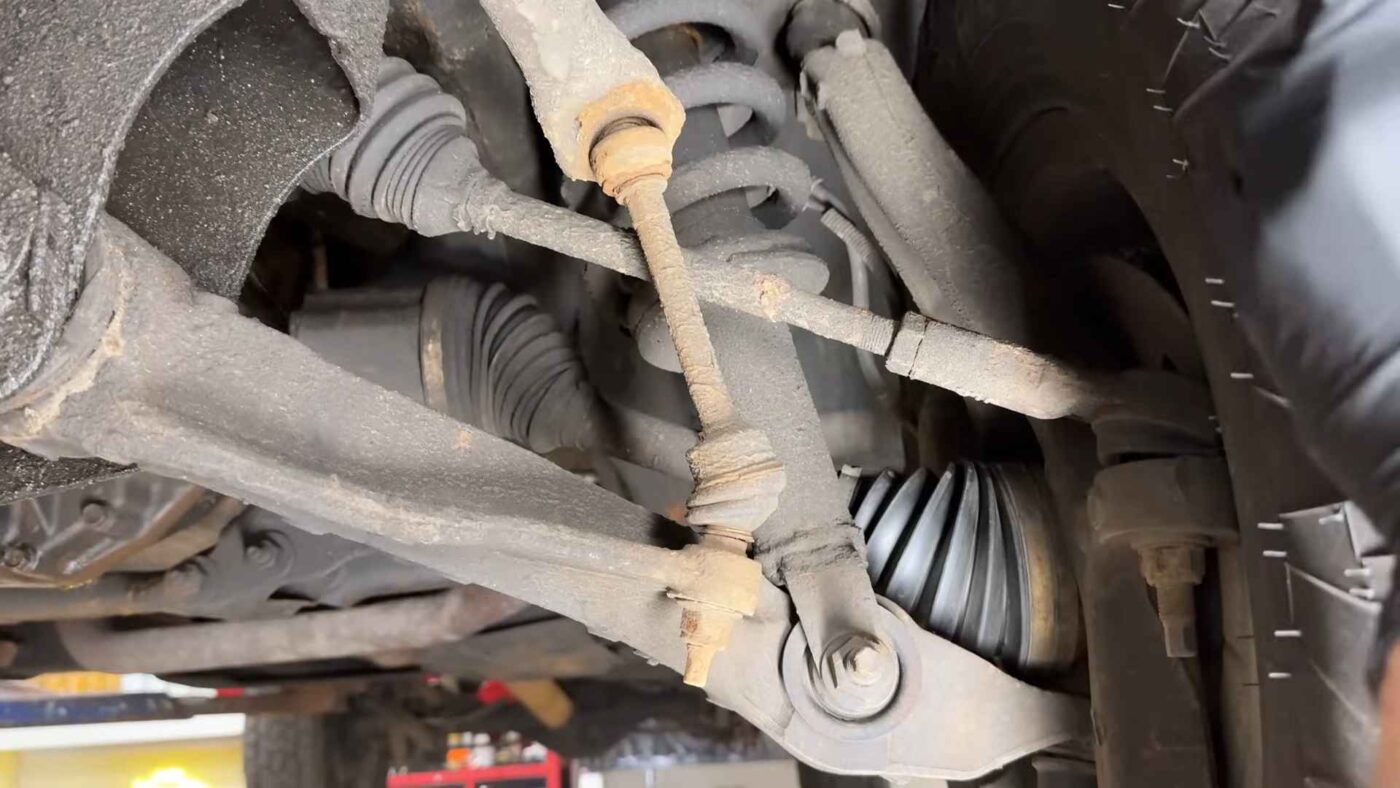 This truck actually it’s a outdoorsman. So we actually have 392 gears which is a pretty aggressive gear set. But for the most part 2500s tend to option or have the option of having higher gearing. I know this Ram 2500 with the Hemi you can get 373s or 410s.
This truck actually it’s a outdoorsman. So we actually have 392 gears which is a pretty aggressive gear set. But for the most part 2500s tend to option or have the option of having higher gearing. I know this Ram 2500 with the Hemi you can get 373s or 410s.
As for Ford, if you go for the 7.3 L Godzilla engine, you can option that truck with 430 gears, which is an extremely aggressive gear option. Again, it’s not a rule because, well, GM with their diesel engine, you can only get 342 gears, which in my opinion is not that aggressive whatsoever. But generally, when we compare a 1500 to a 2500, a 2500 is going to have more aggressive gearing.
And lastly, at number 10, where the rubber hits the road, it is price.
And you would think that a heavyduty truck, a 2500, with all the upgrades that we’ve talked about today, would be substantially more expensive than a 1500. Well, depending on what you’re looking for, it’s not as bad as you think. So, I’m going to throw some interesting numbers at you. So, currently we have a 2025 Ram 1500 Big Horn crew cab 4×4 and we have the 3 L hurricane option. That’s it.
And currently it’s about 565 in terms of the actual MSRP. Ignoring incentives here, going to a Ram 2500, also a 2025 Big Horn crew cab 4×4.
And it comes to about $58,000. So about $1,500 to $2,000 difference, which honestly I thought it’d be a lot worse. But if we go to Ford here for a second, we have a 2025 F-150 XLT and we have the 5 L Coyote V8 optioned as well.
And that brings us to a grand total of $57,145. Jumping over to a 2025 Superduty F250 XLT as well. Crew cab 4×4 just like the F-150. And we option it with the 7.3 L V8.
It comes to 57295. So about $200 more and you get all that extra truck. Very interesting. Not a bad deal if I do say so. Obviously, if you want that big bad diesel or you you need that diesel in your 2500, then you’re going to be looking at pricing that is far more expensive than a similar 1,500.
However, if you’re okay with a gas engine, your 2500, I thought the pricing was extremely reasonable for all the extra truck you get with a 2500 versus a 1500. But those are the top 10 differences that I think were important or important to me when looking at a 2500 or a 1500. Let me know if you guys agree. Maybe you’ve learned a thing or two. As always, if you did like the video, don’t forget to leave that thumbs up.
And if you like cool stuff like this, don’t forget to subscribe. We’d love to have you on board. If you want to help support the channel, you can become one of my preferred customers at amsoil.com. Link in the description.
Anyways, guys, enough of me. We’ll see you on the next freaking.